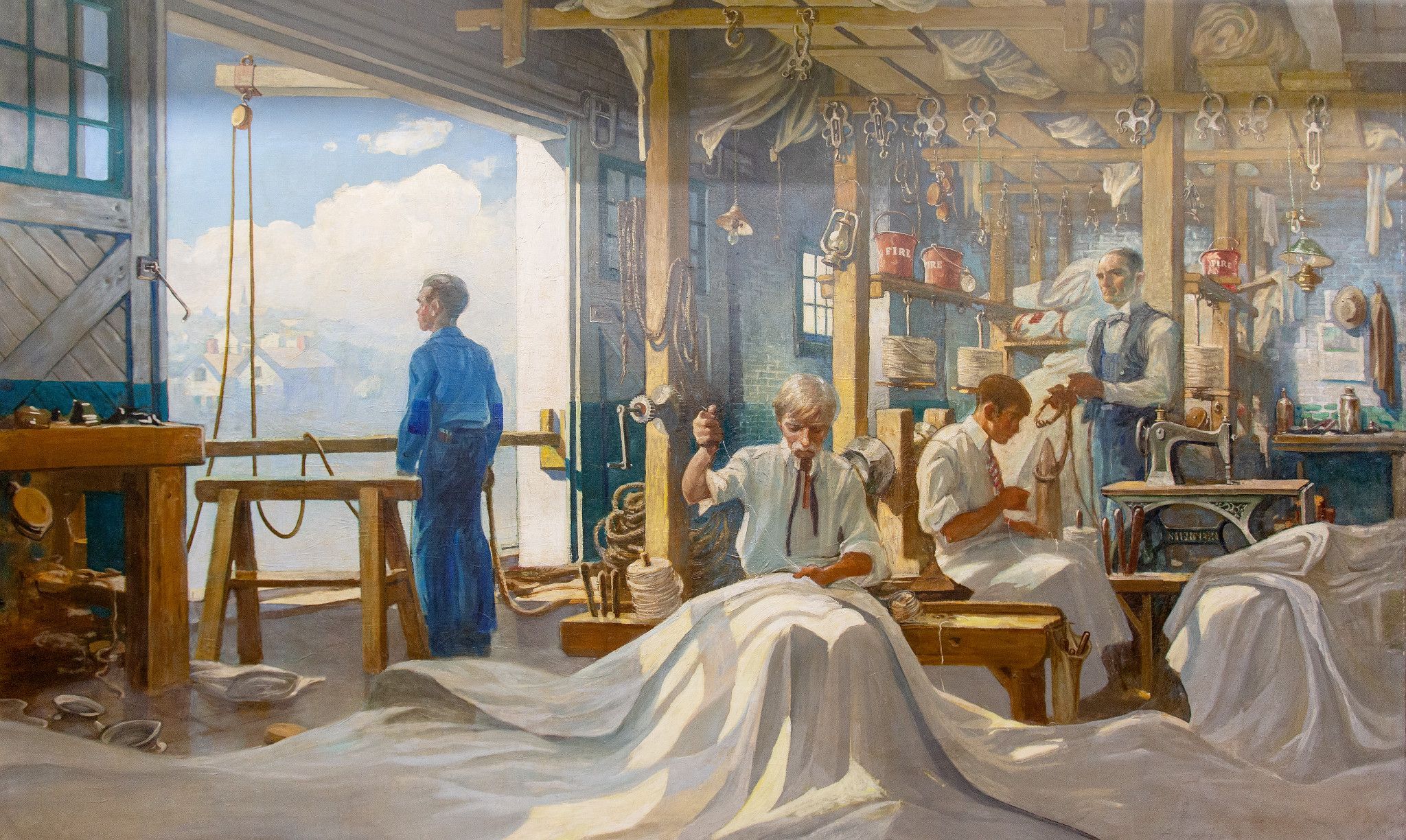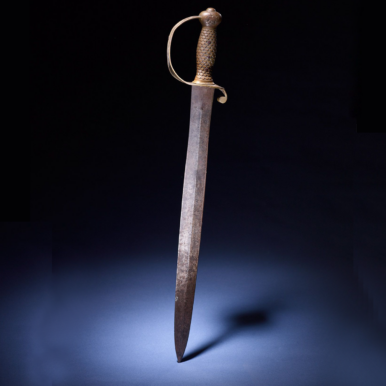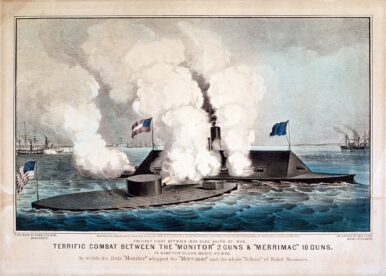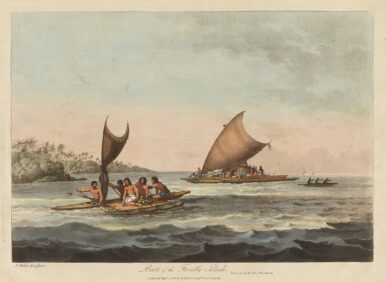Our talented team of Museum educators are committed to providing an engaging experience that brings SOL-related content to life for your students. We bring passion and energy to each program to ensure the highest level of impact and retention. To learn more about this program, click on one of the format options listed below.
Choose your experience:
Duration: 75 minutes
What exactly are primary sources, and how can we use them? Specifically, can works of art be evaluated to learn about technology and its evolution? By evaluating and “visually reading” a painting of the Sailmaker’s Shop at Newport News Shipbuilding by Thomas C. Skinner, students can answer these questions and explore how paintings can teach us about the past while also displaying technology’s continual state of change. In this visually engaging program, students will interpret data, timelines, and charts, compare and contrast artifacts and images, and understand the difference between low-tech and high-tech. At the program’s conclusion, students will analyze a work of art to determine what technology is being utilized and create a visual timeline that charts that technology’s past and future.
Duration: 45 minutes
What exactly are primary sources, and how can we use them? Specifically, can works of art be evaluated to learn about technology and its evolution? By evaluating and “visually reading” a painting of the Sailmaker’s Shop at Newport News Shipbuilding by Thomas C. Skinner, students can answer these questions and explore how paintings can teach us about the past while also displaying technology’s continual state of change. In this visually engaging program, students will interpret data, timelines, and charts, compare and contrast artifacts and images, and understand the difference between low-tech and high-tech. At the program’s conclusion, students will be encouraged to find an example of technology in their house or classroom and build a visual timeline of that object’s trajectory throughout history.
Most of our virtual education programs are scheduled through ZOOM Cloud-based video conferencing. ZOOM is free to use and requires minimal equipment. For more information, please visit: https://zoom.us/
Learning Objectives.
Students will:
- Comprehend what constitutes a primary source of information
- Interpret works of art and use them to glean information about technological evolution
- Better understand how to read charts and timelines
History (VDOE 2023)
- Elementary: Skills 3 (a, c, e, f, h, i), 3.2 (a), 3.10 (a); Skills VS (a, c, e, f, h, i); Skills USI (a, c, e, f, h, i), USI.1 (a)
- Middle: Skills USII (a, c, e, f, h, i), USII.9 (a-b); Skills CE (a, c, e, f, h, i), Skills WG (a, c, e, f, h, i)
Math (VDOE 2016)
- Elementary: 3.15 (b); 4.4 (b, d); 4.14 (a-b); 5.4; 5.16 (a-b)
- Middle: 6.6 (a-b); 7.2; 8.4
Science (VDOE 2018)
- Elementary: 3.1 (a, c); 3.2 (a); 4.1 (a, c); 4.8 (a); 5.1 (a, c, e); 5.8 (d-e); 5.9 (a, c)
- Middle: 6.1 (a-d); 6.4 (d); 6.8 (c); LS.1 (a-d); PS.1 (a-d)
Visual Arts (VDOE 2020)
- Elementary: 3.1a, 3.2a-b, 3.3c, 3.6, 3.7, 3.12; 4.1, 4.2, 4.3b-c, 4.6, 4.7, 4.12; 5.1, 5.2, 5.3b-c, 5.6, 5.7, 5.12
- Middle: 6.1, 6.2, 6.3 (a-c), 6.6, 6.7, 6.11, 6.12; 7.1, 7.2, 7.3 (a, c), 7.6, 7.11, 7.12; 8.1 (a), 8.2 (a), 8.3 (a, b, e), 8.6 (a, b), 8.11, 8.12
Pricing:
Payment can be made before the program, or we can invoice following your program.
- Programs at the Museum are $4.50 per student.
All adults accompanying a field trip are free. - Programs at your location are $4.50 per student.
- Virtual education programs are $125 per program.
Reservations are required for all programs and are booked on a first-come, first-served basis. Programs fill quickly in the fall and spring, so make your reservations a minimum of two weeks in advance.
Need some questions answered?
Our team is happy to answer any questions you may have, or recommend the best program for your class.
Call or email our Education team:
[email protected]
(757) 591-7745





